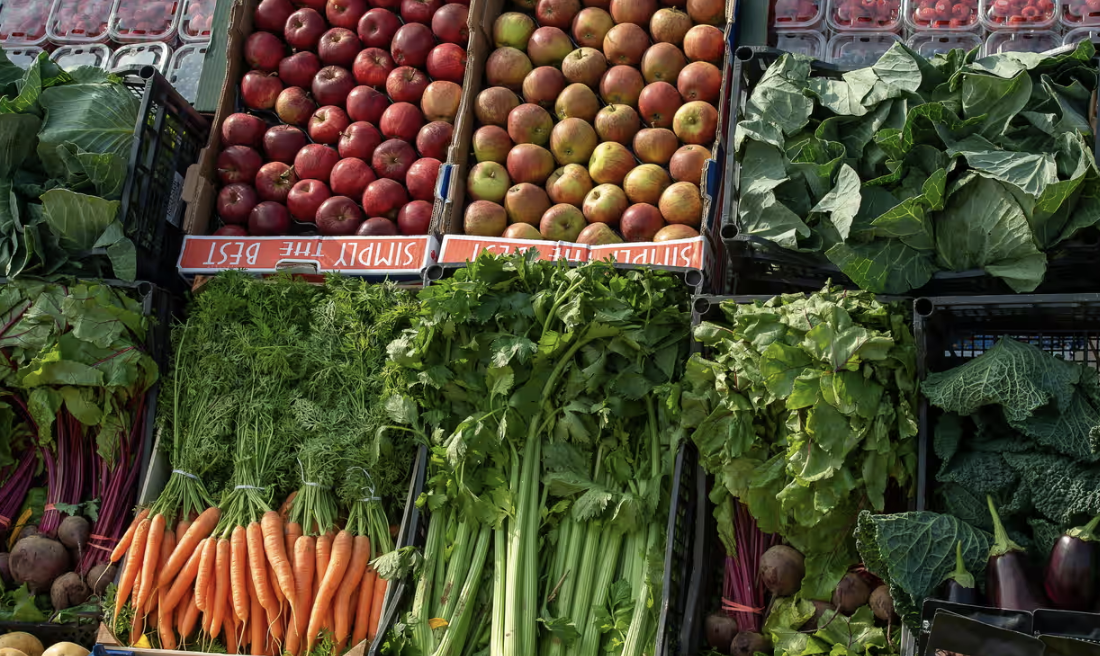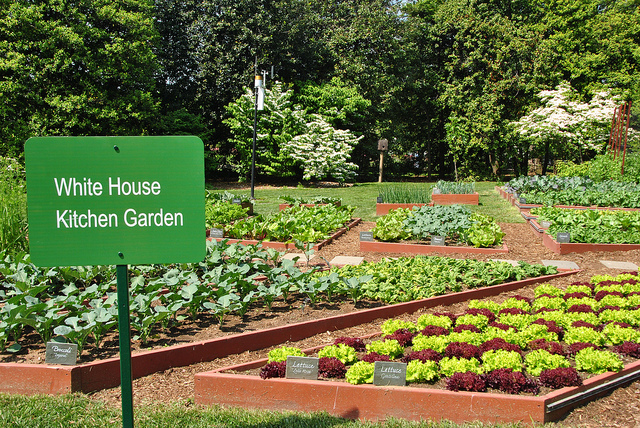Reimagining Public Food Procurement in the 2023 Farm Bill
Lynlee Derrick
Back in June 2022, the U.S. Department of Agriculture (USDA) announced its plan to transform the current food system to better benefit consumers, producers, and rural communities. USDA’s announcement stated that the transformation would make the nation’s food system fairer, benefit more communities, and increase access to safe and nutritious food. Alongside the goals of improving nutrition, access, and equity, USDA specifically set a goal to reduce carbon pollution from the food supply chain.
When setting this carbon emission reduction goal, USDA recognized the increasingly urgent need to address the effects of food systems on the climate and environment. A recent study found that global food consumption is predicted to add around one degree Celsius (1.8°F) to warming by 2100. However, the same study also found that half of that warming could be mitigated. In the United States, the agricultural sector was responsible for 10.6 percent of U.S. greenhouse gas emissions in 2020, with agricultural production accounting for 68 percent of U.S. food emissions. In order to decrease these emissions to meet the USDA’s goals, a systemic transformation of the food system will be needed.
A major component of this transformation is redesigning the way federal public food procurement programs are run. Federal public food procurement is the sourcing of agricultural goods and foods by government entities to meet the needs of their operations. A good example of a government operation that procures food is the National School Lunch Program, a federally-assisted meal program operating in public and non-profit private schools, as well as residential child care institutions. Other examples of federal public food procurement programs include the Emergency Food Assistance Program and the Commodity Supplemental Food Program, both of which work to improve the health and diets of low-income Americans by providing USDA-purchased, nutritious, high-quality food, totaling almost $1.6 billion in fiscal year 2021.
These programs influence food consumption and production and represent an opportunity to determine how food is produced and procured, what type of food is purchased, and who receives the food. The 2023 Farm Bill offers a chance to ensure that publicly procured food is not only nutritious and accessible, but also ethically sourced and sustainably produced.
Promoting Sustainability with Government Purchasing Power
In order to ensure that public food procurement is sustainable, procurement programs will need to explicitly state the value of climate-smart and environmentally-friendly agricultural production. Embracing these values would require federal agencies to consider more than just cost when awarding food procurement contracts to providers and distributors. USDA assessments should instead focus on the practices that help reduce the food system’s impacts on the climate and environment.
One of the greatest challenges facing the U.S. food system is the large number of miles food often travels. Michigan State University’s Center for Regional Food Systems found in 2003 that “conventionally-grown food traveled an average 1,494 miles to get to market.” Transportation accounts for around 19 percent of global food system emissions. Purchasing and consuming locally-grown food and shifting away from globally-transported food can help drastically reduce greenhouse gas emissions. An additional benefit of local purchasing and distribution is the reduced need for food storage, which leads to energy savings. Public food procurement programs can reduce food-related emissions by focusing their purchasing on local farms and distributors, expanding on the local food emphasis the USDA has developed, and building on the Farmers to Families Food Box Program and the Agricultural Marketing Service’s Local Food Purchase Assistance Cooperative Agreement Program.
Beyond emphasizing local procurement, USDA purchasing could source more food from climate-smart farms that incorporate sustainable practices such as organic farming, agroecology, and other methods that reduce water, pesticide, and fertilizer use. Promoting sustainable food production is key in improving diets and cutting emissions from food systems.
Supporting sustainability in public food procurement could also support food system resilience and food security, both nationally and locally. Sourcing and redistributing food locally means communities directly benefit from increased access to fresh food and to investments in small, local businesses. Additionally, increased resilience from values-driven public food procurement programs can help achieve USDA’s goal of building a food system that can withstand shocks such as the COVID-19 pandemic and geopolitical issues.
Equitable Food Systems Mean Social Equity, Too
Alongside investments in sustainable practices, public food procurement programs can help achieve social benefits by sourcing from socio-economically disadvantaged farmers and providing nutritious meals to underserved communities. If these programs establish and prioritize explicitly-stated values of social equity, they could provide numerous social benefits that uplift Black, Indigenous, Hispanic, and low-income communities.
One opportunity for enhancing social equity through procurement revolves around the question of whom to source food from. A 2021 study found that emphasizing equity is one way to address systemic injustices in agriculture and land ownership. Black farmers represented about 1.4 percent of farm producers in 2017, but only accounted for less than one percent of total U.S. agriculture sales. Federal contracts have the potential to support Black farmers and other farmers of color. Investing in farms with non-white ownership can help increase land retention, as the 2021 study found that Black and Indigenous farmers have struggled to stay on their land due to historically unjust policies and lack of access to government subsidies (these tend to favor industrial-scale agriculture). For example, farmers of color were historically denied loans, given more stringent loan terms, and denied and delayed program applications. Many of the farmers in the study were found to be “intentionally cut out from institutional markets, including the largest market: the federal government.” These findings demonstrate the importance of using public food procurement to help farmers of color compete with industrial agribusiness.
Addressing social equity through public food procurement could help improve food distribution in nutrition-insecure areas, in addition to tribal communities, food banks, and public schools. About 87 percent of counties with the highest rates of food insecurity are classified as rural, and the USDA reported around 20 percent of Black households and 16 percent of Hispanic households faced food insecurity in 2021. In addressing these insecurities, food procurement programs must take into account the cultural preferences and needs of the communities they serve, providing food that is both nutritious and culturally relevant. Increasing and improving distribution and procurement based on social equity principles can advance both rural and racial justice while also improving food security in rural communities and communities of color.
Equitable distribution can also provide more nutritious, fresh food to communities that need it the most. Many of the public-serving institutions that benefit from public food procurement are youth-focused, and increasing local food distribution to these institutions can assist in addressing public health concerns in the younger population in the United States.
Public food procurement that emphasizes social equity offers the ability to support local economies and promote jobs in underserved communities. Keeping food purchases local keeps the financial benefits local, and this can revitalize rural communities, address rural poverty, and benefit local family farms. With small-scale family farms comprising nearly 89 percent of all U.S. farms, but only 20.4 percent of production, using federal food procurement funds to support small- and mid-sized farms is crucial to help them survive—and thrive—as they compete against industrial farms that rely on unsustainable agricultural practices.
The Future of USDA Food Procurement Programs
The 2023 Farm Bill presents a valuable opportunity to optimize federal public food procurement programs. They currently prioritize lowest-bidder contracts, which puts social equity and sustainability considerations at a disadvantage. Integrating equity and sustainability as key criteria could promote climate-smart farming and advance climate-related goals.
The potential for public food procurement programs to help address climate concerns has inspired calls for change in order to leverage the purchasing power of federal institutions. A food procurement report compiled by Data for Progress, Friends of the Earth, the Center for Good Food Purchasing, and other agricultural groups suggests implementing true-cost procurement—an approach that considers how government purchases affect public health, local communities, worker rights, and farmers, while also disqualifying contracts with vendors that violate labor, environmental, and animal welfare laws.
The Data for Progress report suggests requiring all food vendors in procurement contracts to disclose their greenhouse gas emissions. Another policy recommendation proposes establishing an official preference to contract with companies and vendors that have demonstrated a commitment to inclusivity and emission reduction efforts. Overall, the report explains how reforming public food procurement programs can create a more regenerative food system that benefits workers, human health, and the environment.
Building on these suggestions, the Institute for Agriculture and Trade Policy (IATP) provided comments to the USDA on how to strengthen and secure agriculture and food supply chains. IATP stated that improvements in food procurement programs could help build resilience in the food system by establishing standards focused on local purchasing and the integration of health, equity, and sustainability measures. Similar statements on how procurement programs can be harnessed to transform the U.S. food system have been echoed by groups such as the National Association of State Departments of Agriculture (NASDA) and the National Sustainable Agriculture Coalition (NSAC). Both groups have urged that the 2023 Farm Bill include a variety of equity-based efforts so that other factors aside from cost are considered in USDA contracts. Additionally, NSAC supports using the 2023 Farm Bill to create a permanent fresh produce procurement program through USDA that emphasizes delivering nutritious, local food to nutrition-insecure populations.
The 2023 Farm Bill presents an opportunity to holistically address some of the unsustainable food practices in the United States, as well as issues of systemic inequality in the agricultural sector. Public procurement has been referred to as a source of “untapped potential,” with effects that can ripple throughout the food system nationwide and leave a lasting impact well beyond the recipients of the procurement programs.







